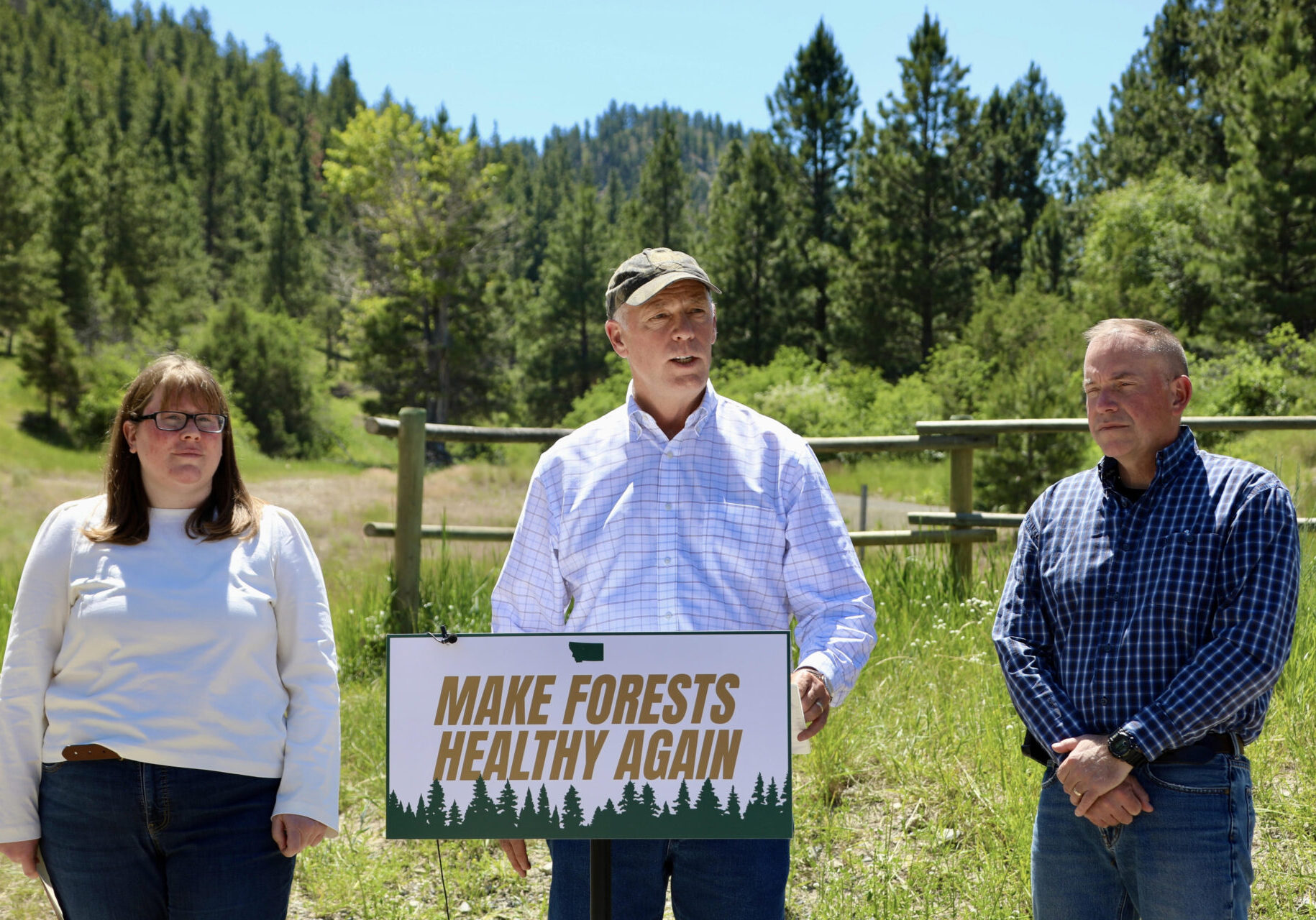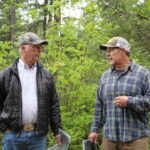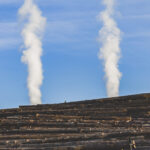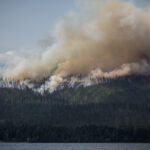Historic Forest Deal Promises Montana Clearer Skies and Rural Economic Growth
Gov. Gianforte's 'Make Forests Healthy Again' deal commits to aggressive timber targets and public accountability—but the real test comes in northwest Montana
By Staff Writer
Jun 30, 2025
HELENA, Mont. — Governor Greg Gianforte’s signing of a landmark forest management agreement with the U.S. Forest Service on Monday represents a 20-year commitment to manage at least 200,000 acres in northwest Montana with concrete targets and public accountability that could reshape how the state approaches wildfire prevention.
The Shared Stewardship Agreement, signed alongside Forest Service Chief Tom Schultz, commits Montana to harvesting 100 million board feet annually (a standard measurement of lumber volume) through state-managed projects on federal lands—a massive volume that responds directly to President Trump’s directive to increase federal timber harvests by 25 percent.
Starting in federal fiscal year 2026, the state will take the lead on implementing forest restoration across the 200,000-acre northwest Montana landscape, focusing on “areas with marketable timber” to meet the Trump administration’s timber production goals. But this isn’t just about logging—it’s positioned as a comprehensive test of whether aggressive forest management can actually reduce wildfire risks that threaten Montana communities.
The Accountability Framework
Unlike typical intergovernmental agreements that often lack measurable outcomes, this deal includes specific enforcement mechanisms. A public dashboard launching January 1, 2026, will track acres treated, board feet harvested, and community safety improvements. Quarterly progress reports will assess whether the approach is working.
“Progress will be measured through a public-facing dashboard tracking acres treated, board feet harvested, and community safety improvements,” according to the governor’s office announcement.
This transparency requirement is significant given Montana’s recent wildfire seasons. State officials warned in June of expecting a very active fire season through August, with dry and hot conditions persisting. The agreement’s core premise—that increased timber harvests and active management will reduce wildfire risks—will now be tested with public data.
Federal Policy Leverage
The agreement strategically uses recent federal policy changes to streamline project delivery. It leverages the EXPLORE Act and Good Neighbor Authority to reduce regulatory delays, while implementing new categorical exclusions that accelerate environmental reviews.
“The agencies have a shared commitment to implement the new and expanded categorical exclusions available to the Forest Service, to accelerate environmental reviews, and eliminate unnecessary permitting delays,” the agreement states.
This represents a significant shift from traditional federal forest management, which has often been criticized for lengthy review processes that delay active management while fire risks accumulate.
The Economic Calculation
The agreement builds on Trump’s broader forest policy push, which we covered in April, including his executive order to increase American timber output by 25%.
The 100 million board feet annual target carries substantial economic implications for rural Montana communities. The agreement acknowledges that insufficient active management has “resulted in increased reliance on foreign timber, lost economic opportunities for Montana’s workforce, and a backlog of untreated, high-risk acres.”
Montana has been steadily increasing its forest management capacity. Since Gianforte took office in 2021, the Department of Natural Resources and Conservation has placed over 130,000 acres under management, including over 72,000 acres in the last biennium alone.
The state has also made unprecedented financial commitments, with House Bill 883 appropriating $30 million annually for fire suppression, fuel reduction, and forest management projects on private, state, and federal lands.
The Expansion Plan
If the 200,000-acre northwest Montana project succeeds, the agreement calls for 2-4 additional landscape-scale projects, plus 5-10 site-specific projects using EXPLORE Act authorities. Five-year work plans for all other Montana National Forests must be completed by December 31, 2025.
The agencies have committed to hiring dedicated staff for statewide coordination by October 1, 2025, and the Forest Service must provide Montana with a prioritized list of critical staffing shortages within 60 days of signing.
The Risk Assessment
The agreement acknowledges the scale of the challenge: over 60 percent of Montana’s forested acres are classified as being at high or very high risk of wildfire, insect infestations, or both, according to the Montana Forest Action Plan.
Whether aggressive timber harvesting and forest management can meaningfully reduce these risks—while supporting rural economies and maintaining forest health—will be tested on a scale unprecedented in Montana. The 200,000-acre northwest Montana landscape becomes the proving ground for an approach that could be replicated across the state’s 25 million forested acres.
The public dashboard and quarterly reporting requirements mean Montana residents will have real-time data on whether this forest management strategy delivers on its promises of safer communities, healthier forests, and stronger rural economies.
Categories: Environment, Government
Don’t miss the week’s top Montana stories
Join readers across Montana who rely on WMN for independent reporting.
Unsubscribe anytime. Want to support WMN? Upgrade for $4/month →






[…] relaunch comes amid renewed momentum for Montana’s timber industry. The state committed to harvesting 100 million board feet annually through a landmark forest management agreement signed in June, with federal timber goals set to […]